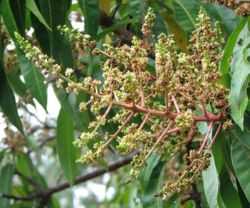Petrolina
| Petrolina | |||
|---|---|---|---|
| Municipality | |||
| The Municipality of Petrolina | |||
.jpg) | |||
| |||
 | |||
| Coordinates: 09°23′34″S 40°30′28″W / 9.39278°S 40.50778°WCoordinates: 09°23′34″S 40°30′28″W / 9.39278°S 40.50778°W | |||
| Country |
| ||
| Region | Northeast | ||
| State |
| ||
| Founded | 1870 | ||
| Government | |||
| • Mayor | Júlio Emílio Lóssio de Macedo (PMDB) | ||
| Area | |||
| • Total | 4,756.8 km2 (1,836.6 sq mi) | ||
| Elevation | 376 m (1,234 ft) | ||
| Population (2009) | |||
| • Total | 281,851 | ||
| • Density | 59.25/km2 (153.5/sq mi) | ||
| [1] | |||
| Time zone | UTC-3 (UTC-3) | ||
| HDI (2000) | 0.747 – medium[2] | ||
- For the petroleum company, see: Petrolina (company).

Petrolina is a city located in the southernmost point of the state of Pernambuco, in Brazil. The population was 281.851 in 2009 in a total area of 4756.8 km²,[3] which makes it the largest municipality in the state by area.
It is situated on the left bank of the São Francisco River across from its twin city of Juazeiro, Bahia. The two cities, making up an urban area of almost 520.000 people, are connected by a modern bridge. Sobradinho dam, enclosing Sobradinho Lake, the second largest artificial lake in the world, is located 26 kilometers upriver.[citation needed]
Road connections are made by BR-407, connecting Feira de Santana, near Salvador, and Picos located in the state of Piauí. There are railroad connections in Juazeiro made by the Ferrovia Centro-Atlântica. The Petrolina Airport is mainly for regional flights (daily flights to the capital Recife and Salvador), plus the international exportation of fresh fruits produced by irrigation agro-poles.
History

The origin of the name "Petrolina" comes from the merging of the original name "Pedra Linda", or "Beautiful Rocks". The growth of Petrolina and its sister city Juazeiro is the result of the construction of the Sobradinho Dam and the abundant availability of water for irrigation in these otherwise desert soils. The region is perhaps the only one in the interior of the Northeast that has gained population through in-migration. While the population in the states of Pernambuco and Bahia as a whole increased by 50.1% between 1970 and 1990, it more than doubled in Petrolina-Juazeiro.[citation needed]
For many years the economy of the Valley of the São Francisco was based on extensive cattle raising combined with subsistence farming.
Starting in the 1960s with the development policies implemented by the government, the valley soon became the beneficiary of important investments for economic development, translated into the construction of highways, increasing electrical energy, improvement in sanitation systems etc.
Investments made in the agricultural sector with the implantation of the irrigated sections of Bebedouro and Senador Nilo Coelho, in turn brought in the installation of factories connected to the regional agriculture base, especially producers of tomato paste, juices, textiles etc.
Agriculture has grown by leaps and bounds with irrigated farming being the main source of income and jobs in Petrolina. The Petrolina-Juazeiro nucleus has turned into a producer of a wide range of irrigated high-value crops, including table grapes and mangos that are sold fresh by cargo aircraft to Europe and the United States, and other crops for the domestic market, including bananas, coconuts, guavas, passion fruit, melons, industrial tomatoes, watermelons, and onions, among others. Due to the miracle of irrigation, growers in Petrolina-Juazeiro produce 90% of the country's exports of mangos and 30% of table grapes, displacing the states of São Paulo and Rio Grande do Sul as the most important exporters of these products.
Climate
Petrolina's climate is very hot and dry, being classified as hot semi-arid (Köppen climate classification BSh). Petrolina is located in the semi-arid belt from the Northeastern Region of Brazil that is characterized with low rainfall. The precipitation does not have good distribution in time or space. The rainy season begins in December and ends in May. After that, the climate is still dry until December.
| Climate data for Petrolina (1961-1990) | |||||||||||||
|---|---|---|---|---|---|---|---|---|---|---|---|---|---|
| Month | Jan | Feb | Mar | Apr | May | Jun | Jul | Aug | Sep | Oct | Nov | Dec | Year |
| Average high °C (°F) | 33.7 (92.7) |
32.9 (91.2) |
33.6 (92.5) |
32.1 (89.8) |
30.9 (87.6) |
30.4 (86.7) |
30.5 (86.9) |
31.5 (88.7) |
34.6 (94.3) |
36.8 (98.2) |
36.9 (98.4) |
35.2 (95.4) |
33.26 (91.87) |
| Average low °C (°F) | 22.3 (72.1) |
22.3 (72.1) |
22.2 (72) |
22.0 (71.6) |
21.1 (70) |
20.2 (68.4) |
19.5 (67.1) |
19.7 (67.5) |
20.7 (69.3) |
22.1 (71.8) |
22.7 (72.9) |
22.5 (72.5) |
21.44 (70.61) |
| Precipitation mm (inches) | 81.9 (3.224) |
105.9 (4.169) |
136.3 (5.366) |
93.6 (3.685) |
21.7 (0.854) |
5.1 (0.201) |
8.7 (0.343) |
2.4 (0.094) |
5.6 (0.22) |
11.9 (0.469) |
53.5 (2.106) |
50.8 (2) |
577.4 (22.731) |
| Source: Brazilian National Institute of Meteorology (INMET) [4] | |||||||||||||
Economy


The main economic activities in Petrolina are based in the irrigated agriculture, related industry and commerce. Main crops in Tons[5] (2007)
There is also a substantial number of animals such as, in heads (2007):
- Goats - 99.500
- Sheep - 57.200
- Cattle- 29.200
- Pigs- 16.200
- Donkeys- 10.400
- Mules- 2.100
- Horses- 1.750
Economic Indicators
| Population | GDP x(1000 R$).[6] | GDP pc (R$) | PE |
|---|---|---|---|
| 294.081 | 2.375.492 | 8.601 | 3.37% |
Economy by Sector 2006
| Primary sector | Secondary sector | Service sector |
|---|---|---|
| 22.79% | 14.05% | 63.16% |
Health Indicators
Health indicators are as follows:[5]
| HDI (2000) | Hospitals (2007) | Hospitals beds (2007) | Children's Mortality every 1000 (2005) |
|---|---|---|---|
| 0.747 | 5 | 431 | 25.6 |
Distances
- Salvador 512 km - (319 miles)
- Recife 730 km - (454 miles)
- Brasília 1550 km - (963 miles)
- Rio de Janeiro 1927 km - (1198 miles)
- São Paulo 2246 km - (1396 miles)
References
- ↑ IBGE 2009 statistics
- ↑ - UNDP
- ↑
- ↑ "Climatological Information for Petrolina, Brazil". Brazilian National Institute of Meteorology. Retrieved 29 December 2012.
- ↑ 5.0 5.1 PE State site - City by city profile
- ↑ Petrolina 2007 GDP IBGE page 32
External links
| Wikivoyage has a travel guide for Petrolina. |
- Petrolina City hall
- Video Petrolina
- Photo-Video Petrolina, Pernambuco
- Portal Petrolina With photos of the city
- Petrolina´s major hotel
- A study of the success of Petrolina and Juazeiro

